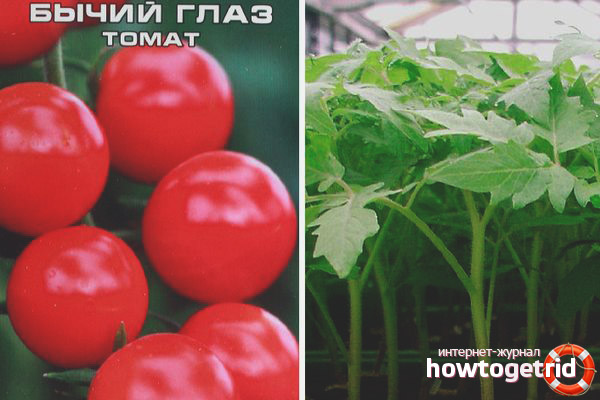The content of the article
The Bull's Eye Hybrid is an indeterminate hybrid of cherry tomatoes. Medium early plant. Bushes are sparse, tall, up to 2 m, require formation, garter to the support. The tomato is super fruitful. The fruits are red, even in size, round, weighing up to 50 g, with a dense wall texture, universal use, good taste.
Tomatoes are susceptible to fungal disease of gray rot. Gray rot is a very common and quite dangerous disease. It damages all aboveground organs and, under favorable conditions, spreads very quickly, causing much damage to the crop. In rainy years, due to the disease, up to 50% of the tomato crop can be lost. Gray rot affects leaves, buds, flowers, stalks, ovary and fruits. Large, blurry, dark gray circles form on the leaves that rot.
Brown spots develop on the stalks, which quickly cover them with a ring, which contributes to the complete drying of the ovary. Separate brown spots form on the fruits, which first soften and then grow. The affected fruits of the tomatoes rot and become covered with a gray ceiling. The pathogen overwinters on plant debris in the form of mycelium and sclerocytes, which remain viable for several years.
Tips for growing tomato seedlings
When transplanting seedlings, they try to immerse the plant in the soil along the very leaves, additionally add soil, moisturizing it. Deepening the plant allows it to form additional roots for nutrition, which is especially important for small volumes of soil.
Subcortex
Tomatoes are in need of macro- and micronutrients. Complex fertilizers provide plants with the following useful elements: potassium, calcium, magnesium.
- After the first treatment, the result is already visible in a few days due to the rapid assimilation of mineral nutrition elements. Complex preparations are recommended to be used from March to the end of August.
- In modern preparations, trace elements are contained in a chelate form, so their effect on the plant organism is instantaneous. Fertilizer components normalize metabolic and photosynthetic processes, intensify growth processes.
- When applied to the soil, the drugs do not dissolve immediately, a lasting effect occurs over 2-3 years. The substances that make up them do not pose a danger to the environment. The mineral complex increases productivity and strengthens plants.
- Plantings after treatment tolerate drought, more resistant to fungal diseases. Using fertilizers, you can provide the necessary mineral nutrition of plants in a short period of time.
You can spray the entire aerial part of the plant. Spend top dressing under the root. They process plants after watering. Top dressing should be done in wet soil (after rain or watering).
Video: 9 secrets of a good tomato crop










Submit